Irvington, new York
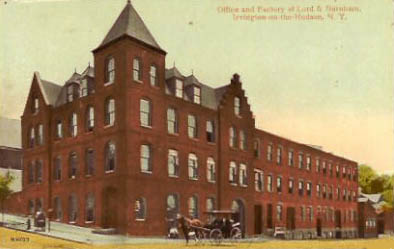
"Office and factory of Lord & Burnham."

This brick building facing the railroad
tracks of the Hudson Division stands as proof there is life in an old factory
that has outlasted the intentions of its builders. Constructed in 1881, the
building served as a greenhouse factory until 1988, after which it stood vacant
for a decade until renovations in the late 1990s prepared the edifice for a new
chapter.
Frederick A. Lord established Lord's Horticultural Manufacturing
Company in 1856 in Syracuse, in central New York. Lord's son-in-law William
Burnham later joined the firm, which was renamed in 1890 when Burnham became President. The company moved to Irvington in 1876, ostensibly to be closer to
the great estates that served as a market for the company's products, its celebrated
glass conservatories. Perhaps
the most famous estate was that of Jay Gould, just over the village line in
Tarrytown. For Lyndhurst, the Gould
estate, the firm constructed what has been said to be the country's first steel
and iron frame, fire resistant greenhouse. (The previous, wood frame, conservatory
at Lyndhurst burned in 1880.) Other commissions included Conservatory
of Flowers at Golden Gate Park in San Francisco (1876-1879) and the Enid
Haupt Conservatory at the New York Botanical Garden (1902). Later still, the
company built the greenhouses for the Boyce
Thompson Institute for Plant Research in Yonkers.
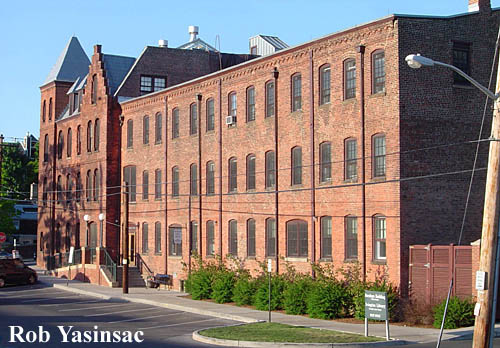
May 20, 2005
The construction of the Lord and Burnham factory in 1881 was brought about by a fire in the original structure the previous year. The newer building is comprised of the four-story Queen Anne-style office, consisting of a tower capped with a pyramidal roof and a stepped-gable pavilion, and the three story factory wing to the south, which is much more utilitarian in design. When the new office and factory was built, the railroad tracks across the street were located right on the Hudson River. Beginning in 1894, the company purchased underwater property beyond the tracks and began filling in to create new land for an expansion. The expansion complex was completed by 1912, at which time Lord and Burnham employed 250 men.
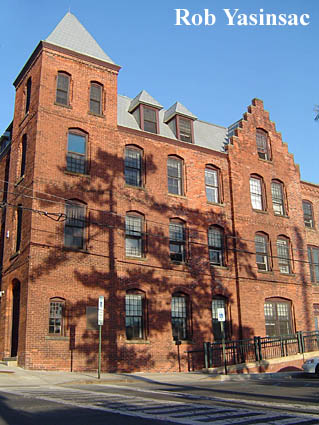
By 1988, only about a dozen employees remained at the Irvington factory, and Lord and Burnham ceased when the factory closed. The Lord and Burnham firm had become a division of the Burnham Corporation, boiler manufacturers, and operations are now headquartered in Lancaster, PA. Many other Hudson River factories closed their doors in the last two decades of the 20th century, and some of those buildings have since been demolished. But within a decade, plans came to fruition for the adaptive reuse of the Lord and Burnham office and factory to house the new Irvington Public Library, with residential apartments above. Stephen Tilly, Architect, oversaw the 2.4 million dollar conversion of the first floor to the library, which opened on January 28, 2000. Across the tracks, the ca. 1912 expansion factory complex has also undergone conversion to modern office and commercial space. Bridge Street Properties oversees the later factory site, which is remarkably similar in construction to the nearby Anaconda Wire and Cable Company factory in Hastings-on-Hudson, large parts of which were demolished in the 2000's.
On a personal note, the Lord and Burnham building is a favorite of this author's, being a place where I have lectured several times, appropriately enough for someone who espouses the virtues of saving old buildings.
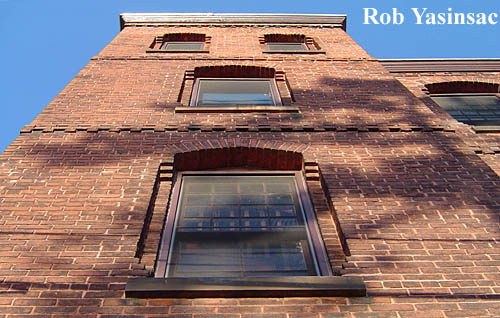
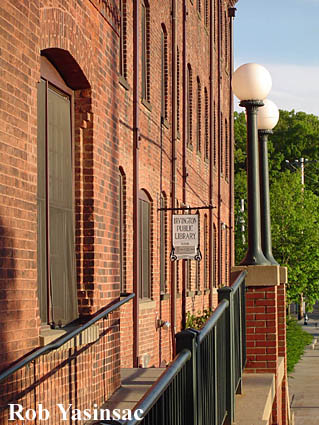
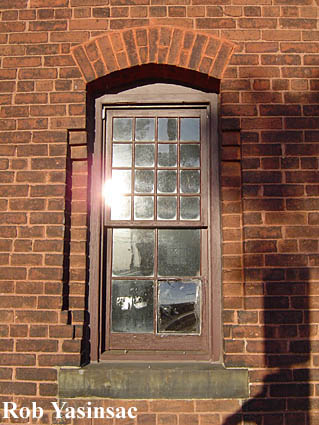
Yaz’ Hudson Valley Ruins and Abandoned Buildings, etc.
This page copyright © 2006 by Robert
J. Yasinsac. All rights reserved.
Copying or reproducing, in any format,
text or photographs without permission from Rob Yasinsac is strictly prohibited.